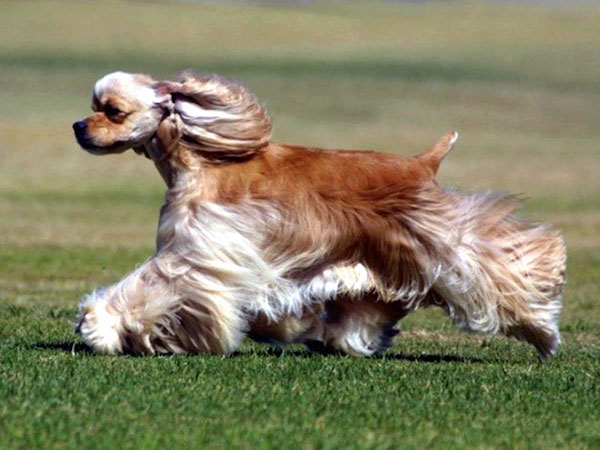
People “inside” the dog fancy (a sweet, archaic term referring to those who show admire, appreciate, exhibit, compete and/or breed purebred dogs) know that “angulation” in dog structure is important, but it can take time to learn why. Rarely have people “outside” the fancy heard the term. A dog, himself, wouldn’t care, but he deserves to live comfortably and free of pain, and more importantly to the dog, he just wants to be with his people – playing, goofing off, running and walking with them for as long as he can. That’s why angulation matters even to a dog who rarely leaves the yard, and it should to you as the owner of that dog.
Simplistically put, angulation refers to the angles formed by bones meeting at various joints, especially at a dog’s shoulders, stifles (knees), hocks and hips. What is considered “proper” angulation can vary between breeds, but when the degree of a given dog’s rear angulation matches the degree of his front, he’s said to be “balanced,” even if both front and rear are less than what is desired for his breed. An ideal degree of angulation is still preferred because good angulation allows a dog to move with comfort since he’s not pounding the pavement because of steep shoulders. Good “angulation” allows the dog to play and run and keep up with his beloved people longer because it gives him stamina to cover a lot of ground with not a lot of effort. Good angulation is also nature’s way of giving a dog shock absorbers when running and jumping. Without a good “layback,” a dog might goose step, throw his feet out sideways, or run stilted. The dog is working as hard as he can, but he’s not getting very far.
Over the years, we’ve come to appreciate that a dog that has good angulation for its breed, and with both ends in balance, moves with such effortless ease and symmetry that it’s hard to take one’s eyes off such a dog. With no extremes, the balanced dog is pleasing to look, proves to be an efficient worker, and best of all, is a dog quite literally comfortable in his own skin.
Structure matters to the pet, show dog, mutt, and performance dog, and it should matter to you if you want your dog to comfortable. If you come to learn that your dog is poorly angulated, you don’t love him or less less, but neither do you ask your dog to participate in activities which will be physically hard on him. Instead of jogging around the neighborhood, take gentle walks. If jogging with a dog is important to you, love the dog you’ve got now, but get your next one from a heritage breeder who knows about soundness, and breeds for it.
There are hundreds of books and websites that help instruct how to evaluate angulation, but understand that it can take a person years to develop an eye, and teach their hands how to feel for it. That said, we all start somewhere. One of our absolute favorite books on the subject is The Art and Science of Judging Dogs by The New Dogsteps: A Better Understanding of Dog Gait Through Cineradiography, What’s Your Angle: Understanding Angulation and Structure for the Performance Dog by Christi McDonald’s piece about balance, and of course, Dr. Carmen Battaglia’s article on structure and movement. The Cocker Spaniel image seen here is from Dr. Battaglia’s website. If you have a site or book that helped you learn, share it below!
